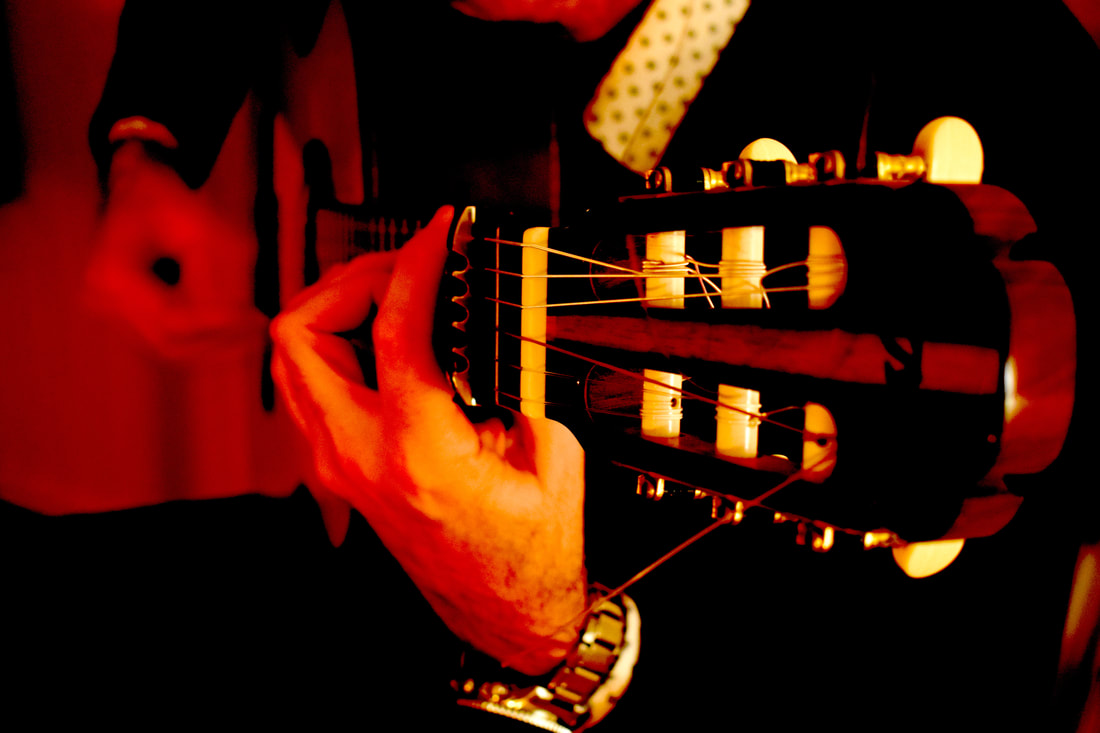In flamenco guitar, we have lots of different ‘palos’ ('sticks' in English). These are different styles of music, singing and dancing which form the flamenco genre. Each palo has its own mood, originating from different parts of Spain and contexts. Together these form the palos flamencos.
Flamenco Soleá
For example, one of Rafael's favourite palos is called the Soleá, which comes from the word soledad – meaning solitude, loneliness. Originally this comes from a place called Triana, which is now a barrio – a district – in Seville, Spain.
Many years ago, when the gypsies and flamencos were persecuted in Spain, they fled to this little enclave, now called Triana.
Rafael describes the mood and sounds of Soleá as mournful, passionate, one of loneliness. You can see a recent 2023 performance by Rafael of the Solea here:
Soleá is a canté madre. In other words, it's a mother chant. It's one of the origins of flamenco, and a lot of different styles derive from it.
Rafael explains more about the Soleá as part of one of his lessons here (from 0:20)
Taranta (canté de las minas)
Some flamenco styles don't have a structure or strict rhythm at all – for example, the canté de las minas – the chant of the mines – of Southeast Andalusia. Here we find a cante, or style, called Taranta. This taranta is very moorish inspired in its mood – even by the first chord you can recognise it (have a listen below).
As Rafael explains, of course Spain is not like this now, but traditionally people would work in the mines of Andalusia and sing their sorrows in this harmony, from which the palo is taken. Rafael describes the mood of the taranta as deep and dramatic.
Alegria de Cádiz
Over to a much more light-hearted style, the alegria de Cádiz comes from a different part of Andalusia, the ancient port city of Cadiz. It's also a dance form. Rafael plays a little below so you can get a feel of how different it is to the solea and taranta:
Fandangos de Huelva
Up the coast from Cadiz we have Huelva, from which we have a palo called 'fandangos de huelva'. Again, like the alegria, it's used more as a dance form. There are also fandango libres, which means a free fandango, where a singer sings without a structured rhythm – and they are accompanied with just a few chords.
In the video above Rafael also later plays a fandango (if you want to hear it only as a guitarist). But in the video we have included below, there is a fuller performance with dancers and percussion, alongside Rafael's playing:
The bulería – which we think comes from the word 'to fool' ('bular' in Spanish) – is an instant kind of rhythmic, improvisation – an instant ‘wow!’ for most guitarists who aren't used to hearing it.
It's quite syncopated and it's great fun – guitarists love it
because it's such a challenge.
Rafael plays some in the style video above (guitar only), but below we have included an example with a dancer and percussionist, so you can hear how the sound fits in with other musicians.
Rumba
Rumba is perhaps the most recognisable form of 'flamenco' guitar today. It is an an upbeat, light-hearted style with a party feel.
Increasingly it influences other genres such as rock and pop. Arguably it is easier for this style to influence other genres because it is in 4/4, which most Western music is already in – unlike other styles of flamenco which have less common time signatures (e.g. the buleria, solea) and would feel unfamiliar to most audiences.
{learn-flamenco}
Rumba perhaps gives more room for flexibility than some other styles of flamenco. Increasingly we can see it being used in other, newer genres such as electronic.
Here is an example of rumba with a full band:
The above is only a snap tour of some different palos in traditional flamenco guitar, but there are hundreds of them (Spain is such a vast geography and culture!) This is before considering how the sounds of flamenco have been adapted in other parts of the world by musicians today.
Whatever the flamenco style, you always have to adhere to the structure of the piece – especially with other singers, dancers and musicians. That is the challenge and interest with this musical style: for example, with the 12 beat structure of the buleria, you have to find a way of being inventive, and creative, while keeping the interest in the composition going, and harmony with everything else.
Learn from a Master Who's Performed for Royalty: Start Your Flamenco Journey Today
- Unlock this article & video library for free
- Join thousands of guitarists who finally got past only 'knowing some basic chords'
- Learn flamenco from a lifelong performer & celebrity teacher from Madrid
- Rafael has taught EOB (Radiohead), Jack Peñate & played for HRH Elizabeth II (etc)
By entering your email you agree to receive email updates from Flamenco With Rafael. See our Privacy Policy.




